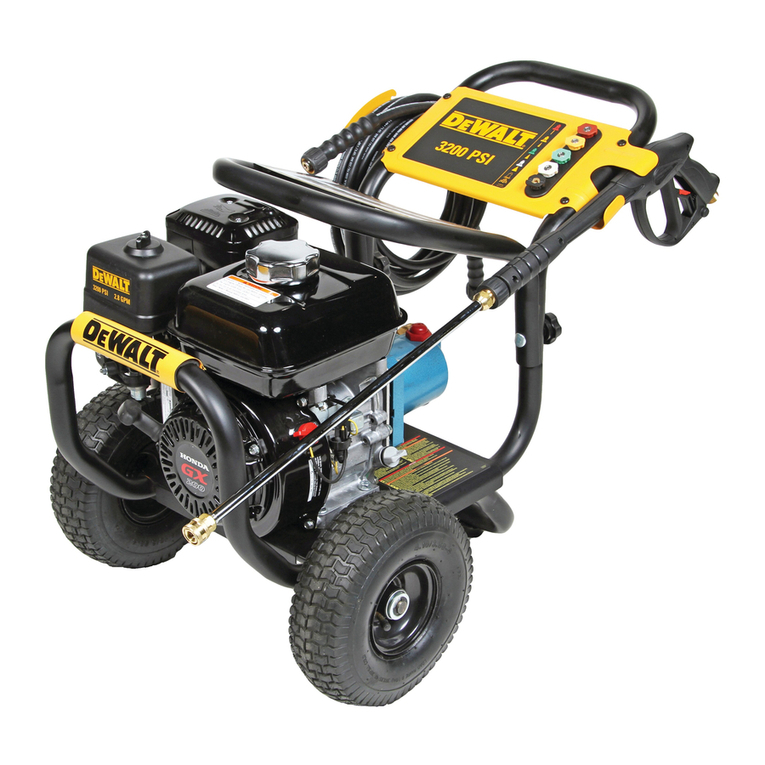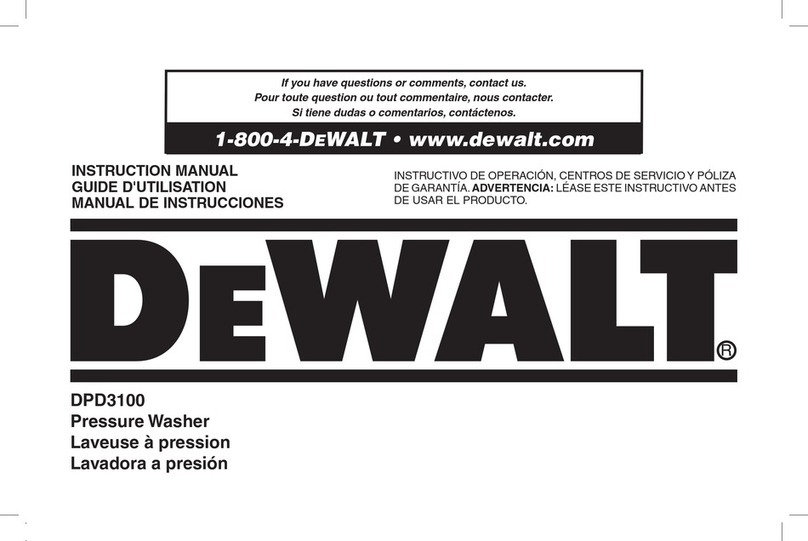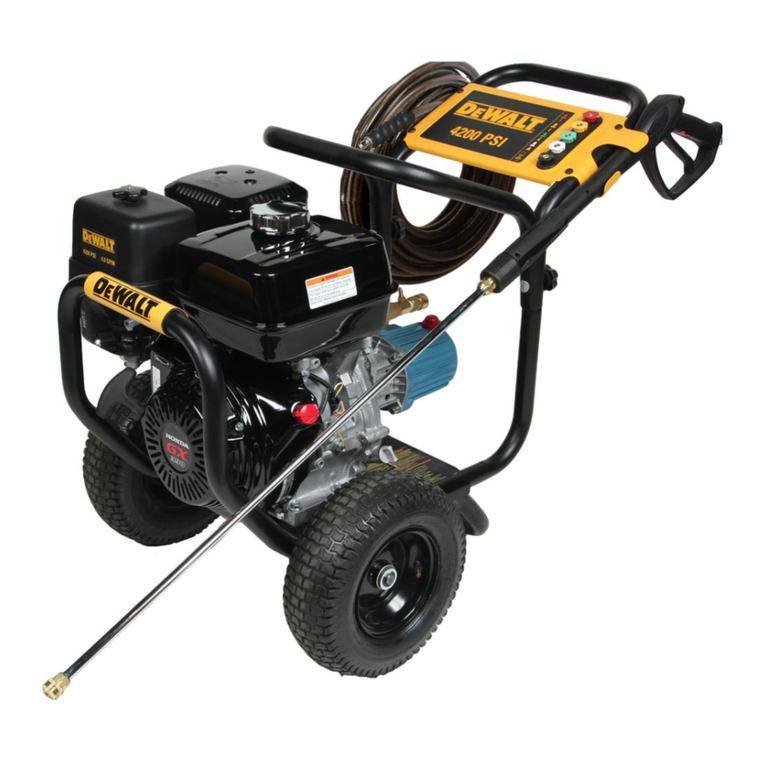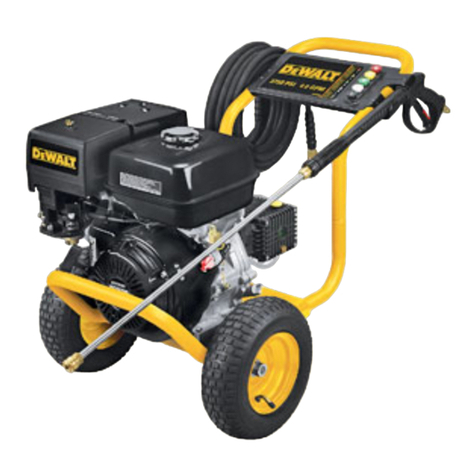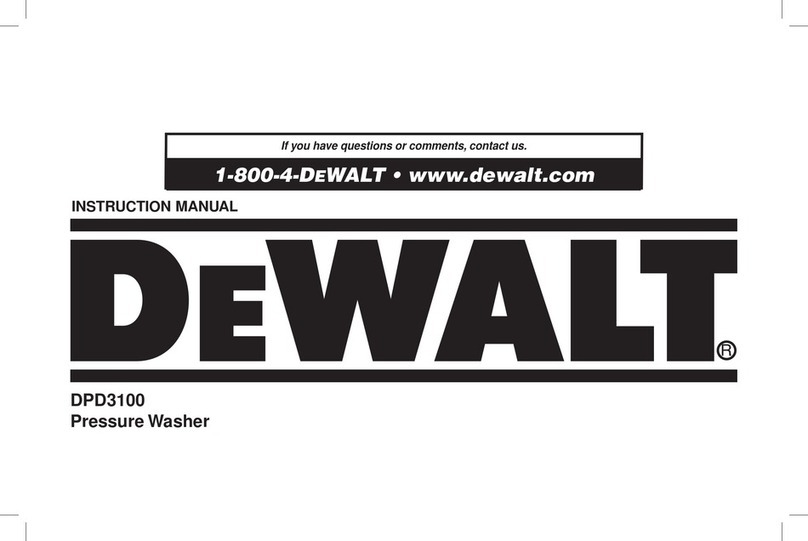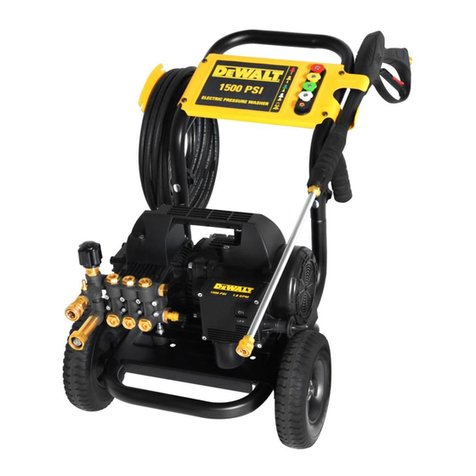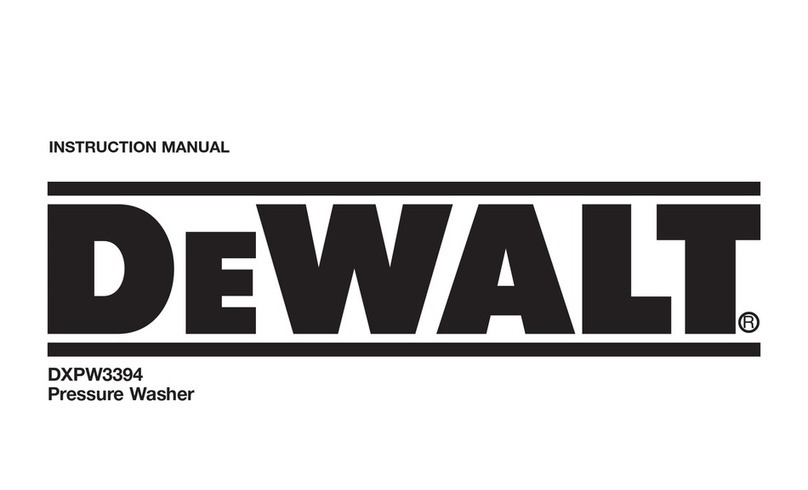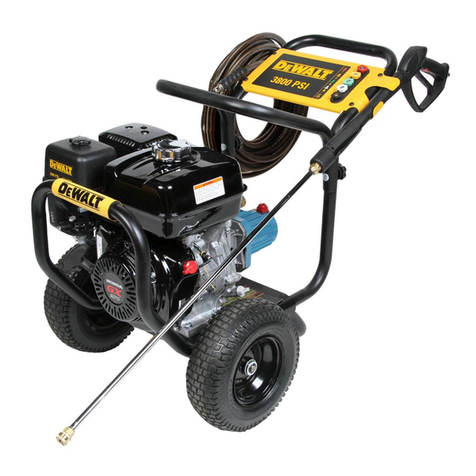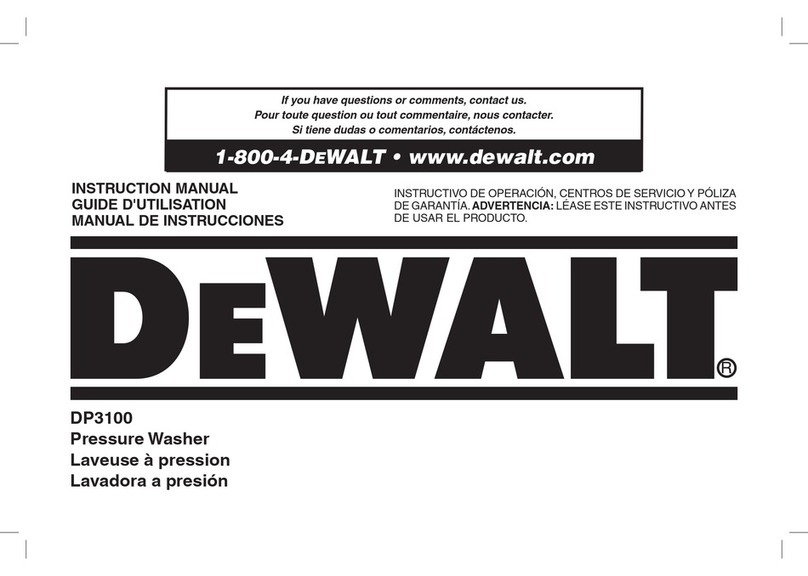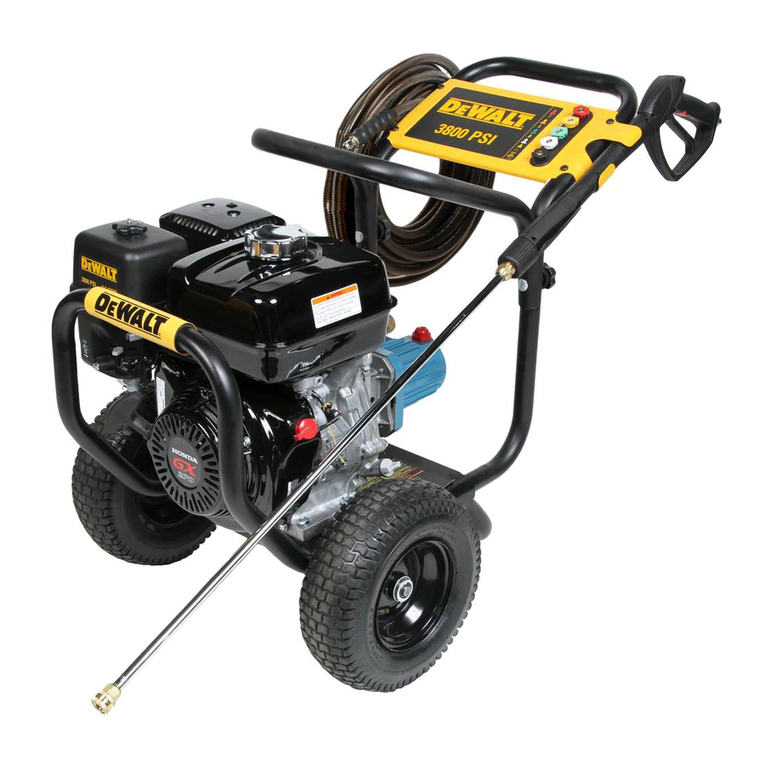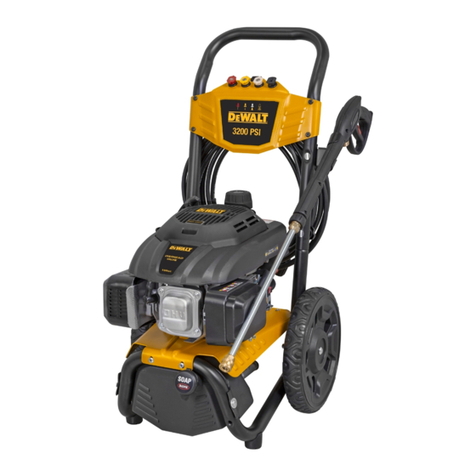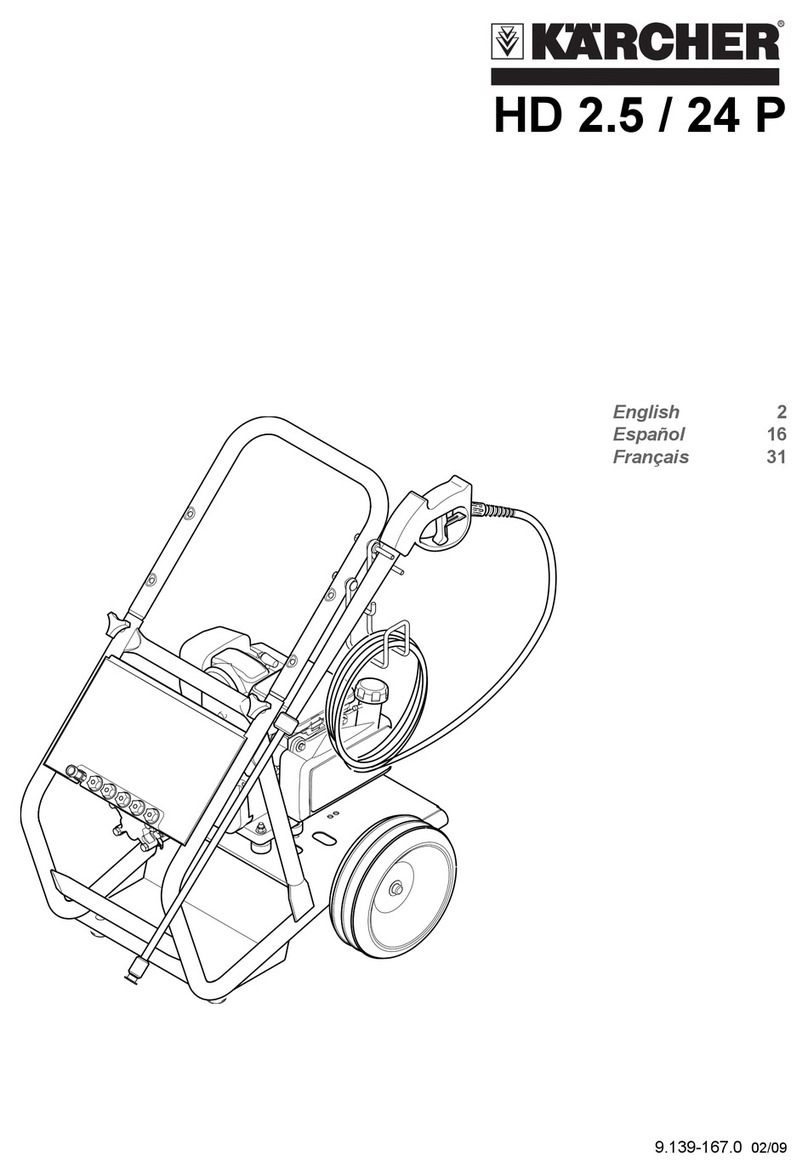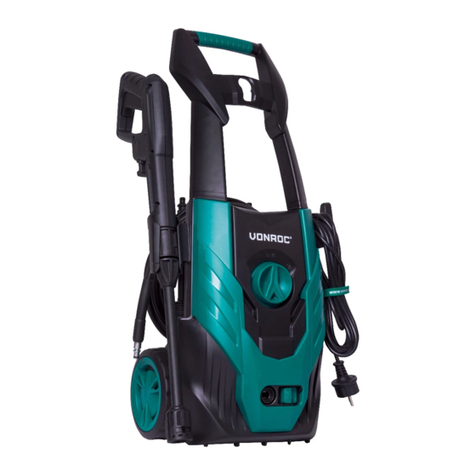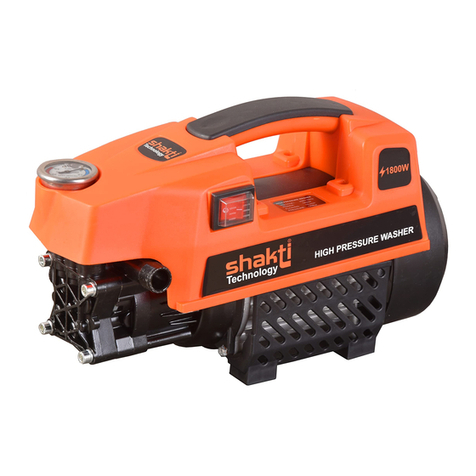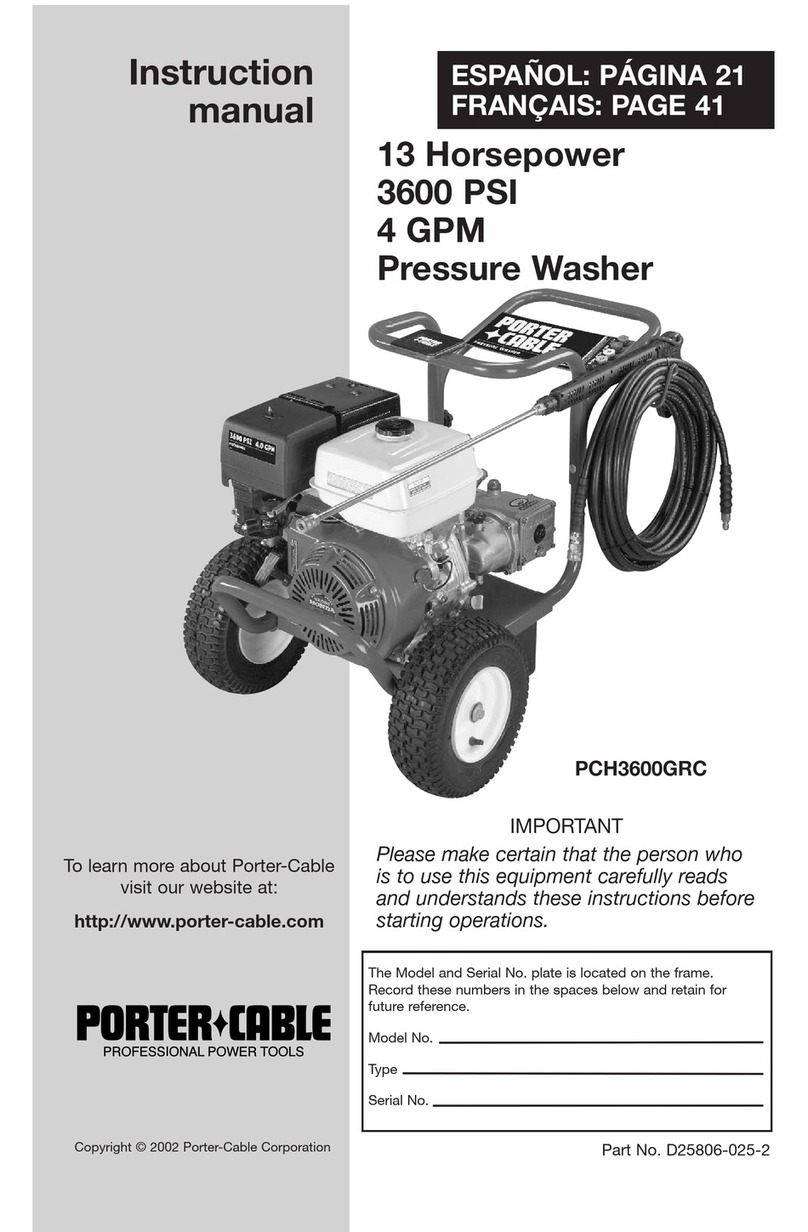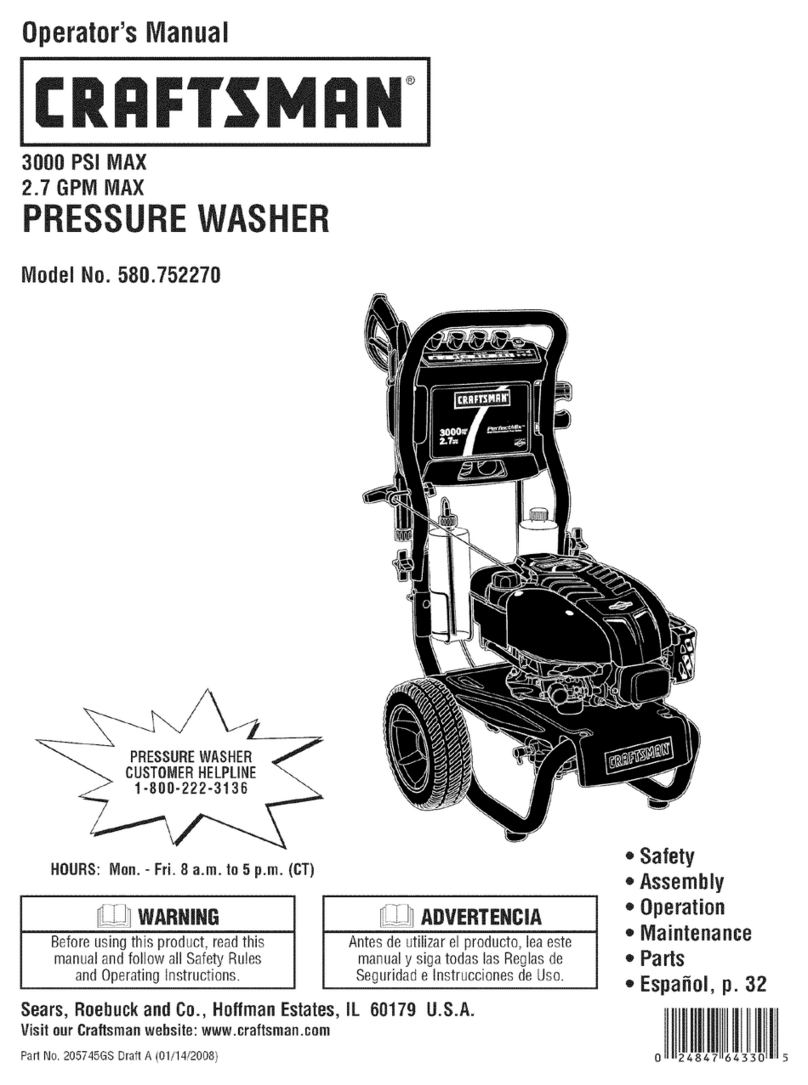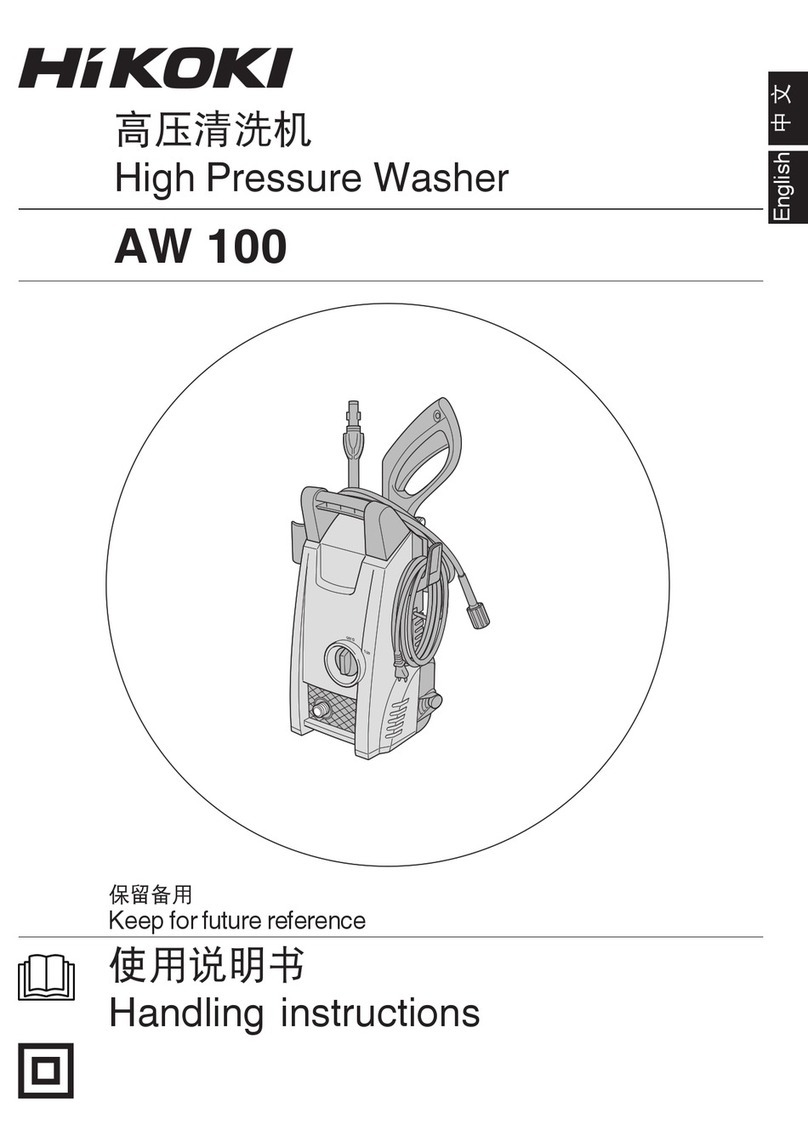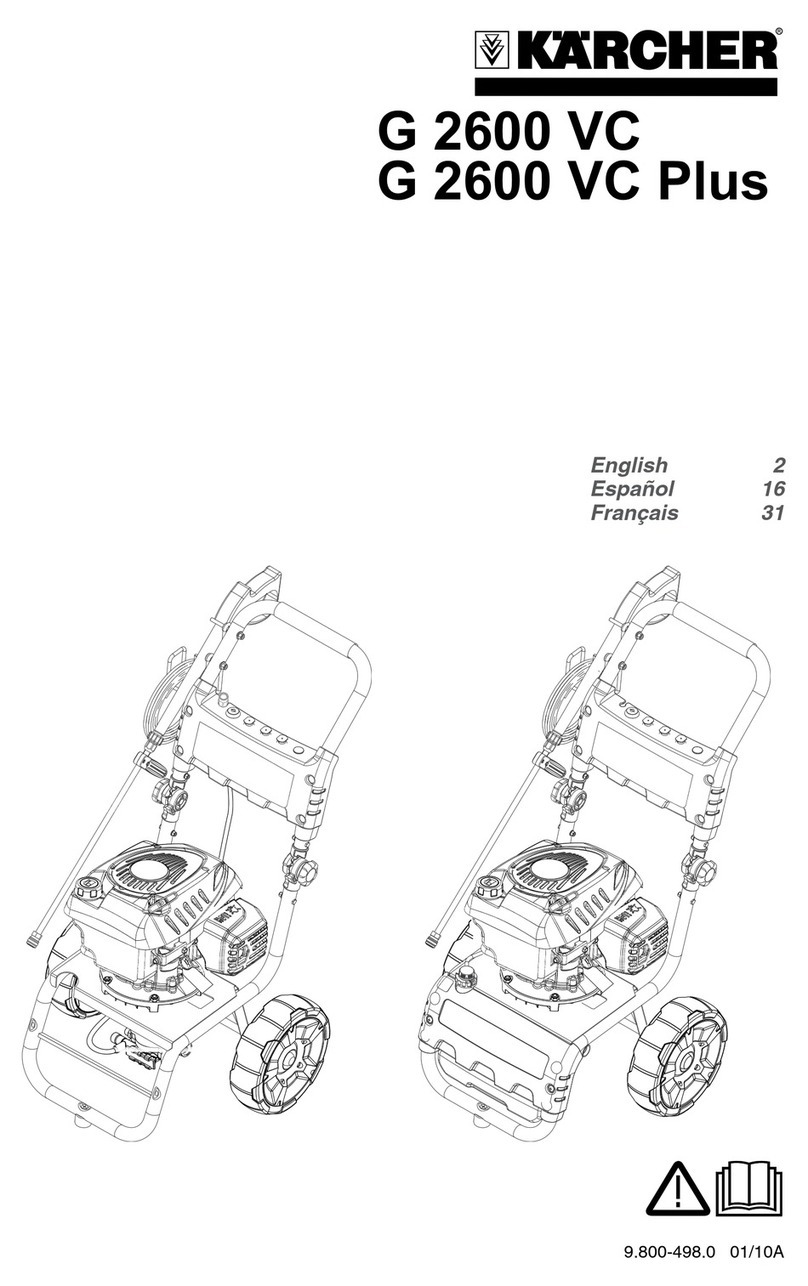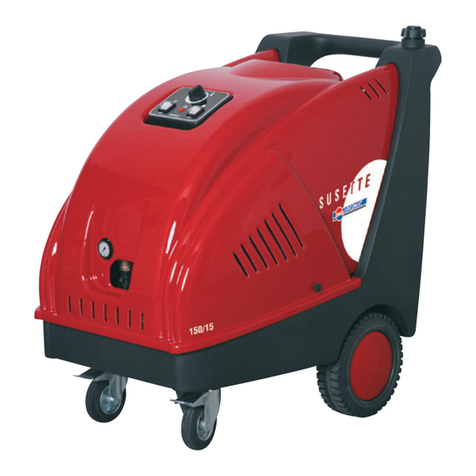
7
ENGLISH
1. Do not touch plug or outlet with wet hands.
2. Avoid accidental starts. Move switch on unit to OFF position
before connecting or disconnecting cord to electricaloutlets.
3. Water spray must never be directed towards any electric wiring
or directly towards the pressure washer machine itself or fatal
electric shock mayoccur.
4. The narrow pin point stream is very powerful. It is not
recommended for use on painted surfaces, wood surfaces or
items attached with an adhesivebacking.
5. Keep operating area clear of all persons and animals.
6. Always use both hands when operating pressure washer
to maintain complete control of the wand.
7. Do not touch nozzle or water spray while operating.
Never place hands in front ofnozzle.
8. Wear safety goggles while operating. Wear protective
clothing and footwear to protect against accidentalspraying.
9. Disconnect power plug from the outlet when not in use
and prior to the detaching of the high pressure hose.
10. Never tie knots or kink the high pressure hose as
damage could result. Inspect the high pressure hose
regularly. Replace the hose immediately if it is damaged,
worn or shows any signs of cracks, bubbles, pinholes,
or other leakage. Never grasp a high-pressure hose that is
leaking ordamaged.
11. Do not operate or store this product in temperatures
below 4 °C (40 °F). Freeze damage is not covered by
thewarranty.
12. Carefully observe all chemical instructions and warnings
before using. Use only approved pressure washer
cleaners. Do not use bleach, chlorine, or any cleaners
containing acids. Always follow manufacturer’s label
recommendations for proper use of cleaners. Always
protect eyes, skin and respiratory system fromcleaners.
13. The pressure washer should not be used in areas where
gas vapors may be present. An electric spark could cause an
explosion orfire.
14. To minimize the amount of water getting into the
pressure washer, the unit should be placed as far as
possible from the cleaning site during operation.
15. To prevent accidental discharge, the spray gun should
be secured by locking the trigger when not in use.
16. To allow free air circulation, the pressure washer should
NOT be covered during operation.
17. Never touch, grasp or attempt to cover a pinhole or
similar water leak on the high-pressure hose. The stream
of water IS under high pressure and WILL penetrateskin.
18. Use only hoses and accessories rated for pressure higher
than your pressure washer’s PSI / Bar. Never use with any
other manufacturer’s accessories orcomponents.
19. Never defeat the safety features of thisproduct.
20. Do not operate machine with missing, broken or
unauthorisedparts.
21. Never spray flammable liquids or use pressure washer in
areas containing combustible dust, liquid, orvapors.
WARNING: Risk of injection or injury – do not direct
discharge stream atpersons oranimals.
WARNING: Read this entire manual before attempting to
assemble, operate or install theproduct.
WARNING: This unit was designed for specific
applications. It should not be modified and/or used for any
application other than that which it was designed.
NOTICE: Always store your pressure washer in a location
where the temperature will not fall below 4°C (40°F).
freeze damage is not covered by thewarranty.
WARNING :This machine has been designed for use
with the cleaning agent supplied or recommended by
the manufacturer. The use of other cleaning agents or
chemicals may adversely affect the safety of themachine.
WARNING: During use of high pressure cleaners, aerosols
may be formed. Inhalation of aerosols can be hazardous
tohealth.
WARNING: High pressure jets can be dangerous if subject
to misuse. The jet must not be directed at persons, live
electrical equipment or the machineitself.
WARNING: Do not use the machine within range of
persons unless they wear protectiveclothing.
WARNING: Do not direct the jet against yourself or others
in order to clean clothes or foot-wear.
WARNING: Risk of explosion – Do not spray
flammableliquids.
WARNING: High pressure cleaners shall not be used by
children or untrainedpersonnel.
WARNING: High pressure hoses, fittings and couplings are
important for the safety of the machine. Use only hoses,
fittings and couplings recommended by themanufacturer.
WARNING: To ensure machine safety, use only original
spare parts from the manufacturer or approved by
themanufacturer.
WARNING: Water that has flowed through backflow
preventers is considered to benonpotable.
WARNING: the machine shall be disconnected from its
power source during cleaning or maintenance and when
replacingparts.
WARNING: Do not use the machine if important parts
of the machine are damaged, e.g. safety devices, high
pressure hoses, triggergun.
WARNING: Depending on the application, shielded
nozzles can be used for high pressure cleaning, which
will reduce the emission of hydrous aerosols dramatically.
However, not all applications allow the use of such a
device. If shielded nozzles are not applicable for the
protection against aerosols, a respiratory mask of class
FFP 2or equivalent may be needed, depending on the
cleaningenvironment.
According to the applicable regulations, the
appliance must never be used on the drinking
water network without a system separator. Use a
separator as per IEC 61770. Water flowing through
a system separator is considered not drinkable.


